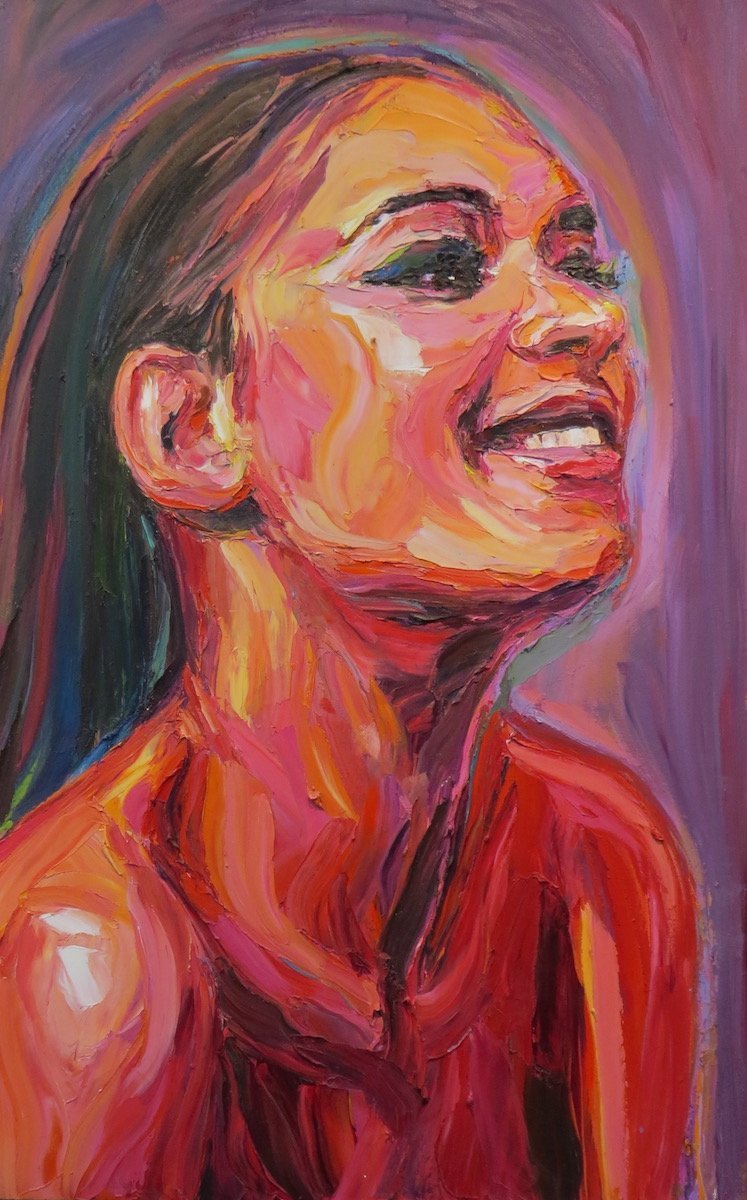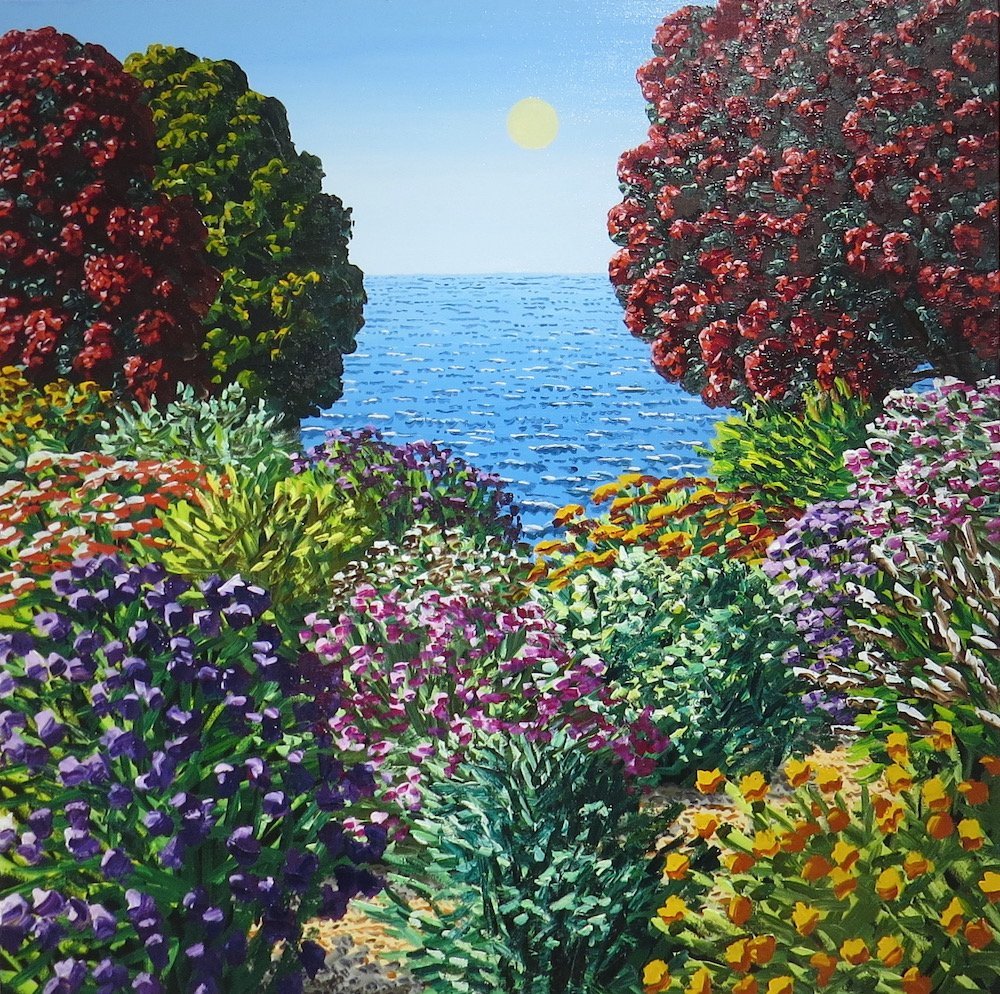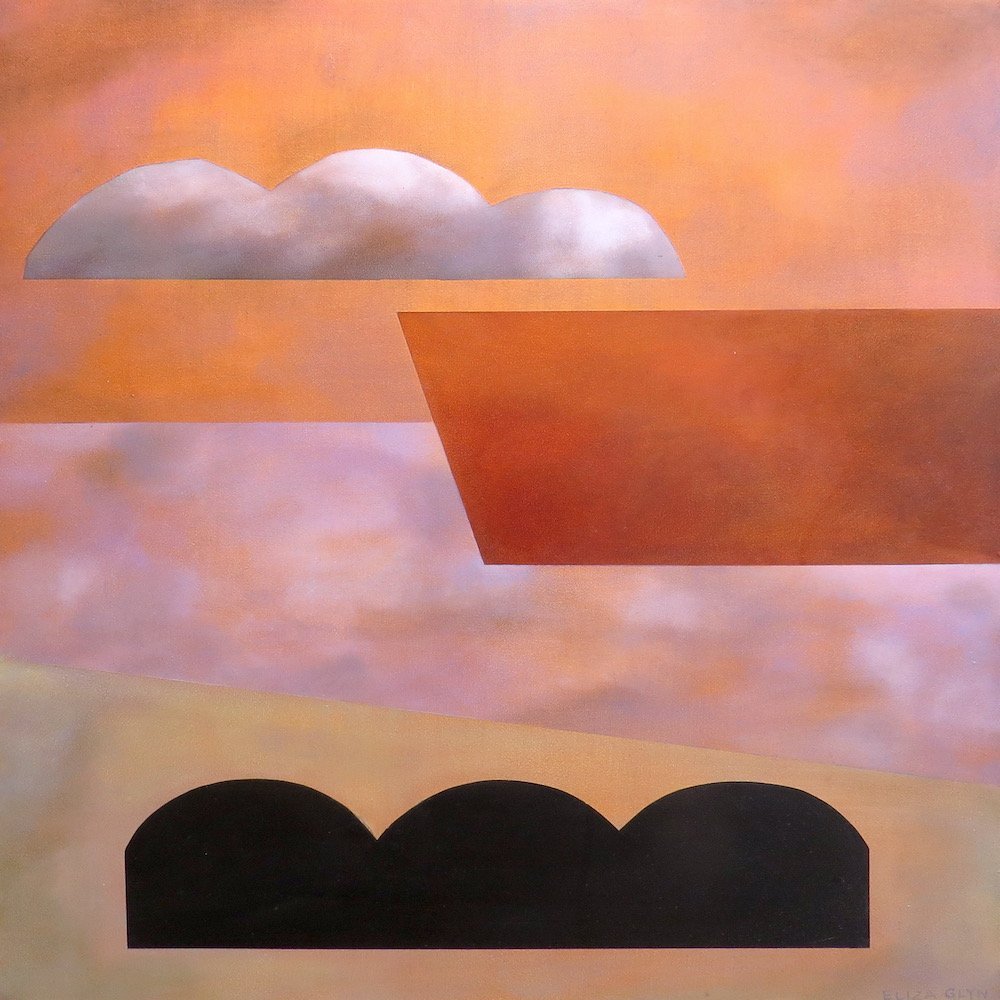
(The Artist’s Room)
It is rare for any gallery to reach its 21st anniversary, so it’s no surprise that The Artist’s Room is celebrating with an impressive exhibition featuring dozens of works.
The gallery is crammed with art, much of it demanding repeated views.
Portraiture is well represented by Stephen Martyn Welch, Sam Bennett, and Tyler Kennedy Stent, as well as in caricature form with three-dimensional works by Amy Brennan and Helen Back. Landscapes are also a major part of the show. Tim Laffey provides soft focus panoramas, and Steev Peyroux surprises by adding human figures front and centre in his seascapes. Ricky Drew, Catherine Garrett, and Vinny Thompson also provide excellent pieces.
Animal studies are perhaps the most frequent subjects on display, with Brad Jackson’s remarkable crayfish and Matt Gauldie’s fine bronze fantail among the highlights. Daniel Wright’s sleek copper stingray forms part of an unlikely pairing with Fiona Tunnicliffe comical fish ceramics. Liam Gerrard’s astonishingly detailed moth and Rob Foote’s impressive magic realist fish and insects also add well to this category.
Among other works in the exhibition, Helen Kerridge’s still lifes, Murray Sheppard’s abstract carving, Lou Mathieson’s glasswork, some remarkable Angus Milne scrimshaw, a lace-like painting by Anna Tang, and a surprising carved surfboard from Bino Smith are also standouts.

(Milford Gallery)
Karl Maughan is a well-known and frequent exhibitor at Milford Gallery.
His heavily flowered scenes provide bright, colourful, but slightly sinister depictions of the formal garden.
The works seem slightly sinister, as they are claustrophobic. The scenes depicted initially seem well-tended floral delights, but the bushes and shrubs have started to overgrow the paths which lead off into the unknown. It is as if a formerly regimented nature has overcome the stipulations put on it by human gardeners, reverting to the wild. The paths disappear into the distance, and there is no way of telling whether they remain safe or have hidden dangers.
In Maughan’s latest exhibition, we seem to be near the edge of the garden. A wan moon rises over a rippling sea, the scene framed within a border of pohutukawa and rhododendron. We sense a reduction in the garden’s entrapment, yet the paths still only hint at a direction, still hiding their hidden routes.
These works present a yin and yang: the sky and sea against the paths and blooms. The tension created adds a dynamism to the works, which is also reflected in Maugham’s painting style, in which bold, almost abstract markmaking is used to build up his impressive shrubberies.

(Port Chalmers Maritime Museum
Eliza Glyn presents a small series of works at Port Chalmers Maritime Museum.
The paintings, musings on Glyn’s location close to the container port, are gentle, reflective pieces falling between colour field and hard-edged styles. The land and sea of the port have been reduced to simple geometries, and as a result have gained a dreamlike quality and a genuine feeling of spirituality.
The subtleties of the forms are perhaps best summed up by the partnered pieces Mother and Father. At first, these images seem near identical, differentiated only by a stylised treeline or hill. Closer inspection reveals the differing treatment of the two paintings, the solid gold background of Father and the heavily worked gold of Mother. The circles which lie over this background are also subtly different, a deep umber brown for Mother and a charcoal black for Father.
Within the Albers-like colour-field expression of the works, gentle images emerge of the port, its forested hills, and its industrial heart.
The atonal trees of Stand and the geometries of Dock are quiet, contemplative works, and the two Of a Hundred Suns works burn their orbs into the viewer. The suggestion that over 90 more Suns are either complete or contemplated implies that this could be the start of an intriguing extended series from Glyn.
By James Dignan












